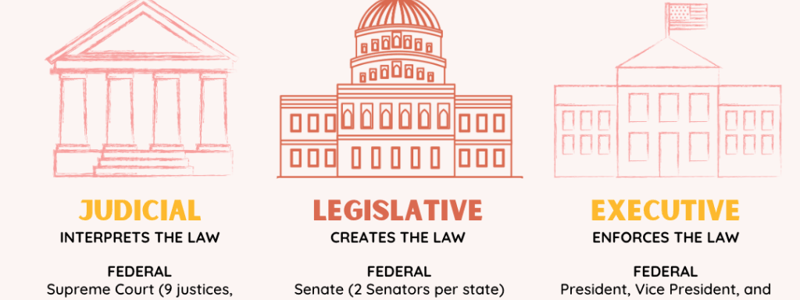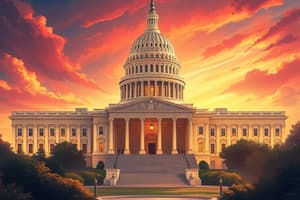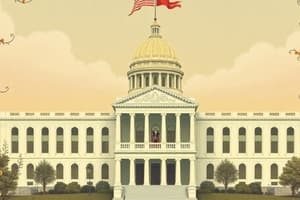Podcast
Questions and Answers
What is the primary responsibility of the Executive Branch in the US government?
What is the primary responsibility of the Executive Branch in the US government?
- Interpreting laws
- Overseeing elections
- Making laws
- Enforcing laws (correct)
What is the purpose of the system of checks and balances in the US government?
What is the purpose of the system of checks and balances in the US government?
- To give the President unlimited authority
- To limit the power of states
- To expedite the passing of laws
- To ensure no branch gains too much power (correct)
Which branch of the US government is responsible for making laws?
Which branch of the US government is responsible for making laws?
- Judicial Branch
- Supreme Court
- Senate and House of Representatives (correct)
- Executive Branch
What is the belief of Anti-Federalism?
What is the belief of Anti-Federalism?
What is the main principle of Federalism?
What is the main principle of Federalism?
What is the role of the Bill of Rights in the US Constitution?
What is the role of the Bill of Rights in the US Constitution?
What is one of the purposes of having three branches of government with a balance of power?
What is one of the purposes of having three branches of government with a balance of power?
What is the significance of the 10th Amendment to the US Constitution?
What is the significance of the 10th Amendment to the US Constitution?
Flashcards are hidden until you start studying
Study Notes
The US Government Structure
- The primary responsibility of the Executive Branch is to enforce the laws of the land.
Legislative Branch
- The branch responsible for making laws is the Legislative Branch, also known as Congress.
System of Checks and Balances
- The purpose of the system of checks and balances is to ensure that no one branch of government has too much power.
- This system prevents any one branch from dominating the others, maintaining a balance of power.
Federalism and Anti-Federalism
- Federalism is a system of government in which power is divided between a central authority and smaller regional governments.
- The main principle of Federalism is that power is divided between the national government and smaller regional governments.
- Anti-Federalism, on the other hand, is the belief that power should reside primarily with the states rather than the national government.
The Bill of Rights
- The Bill of Rights is a set of amendments to the US Constitution that guarantees individual rights and freedoms.
Balance of Power
- One of the purposes of having three branches of government with a balance of power is to prevent any one branch from abusing its authority.
10th Amendment
- The 10th Amendment to the US Constitution states that any powers not delegated to the federal government are reserved for the states or the people.
Studying That Suits You
Use AI to generate personalized quizzes and flashcards to suit your learning preferences.




